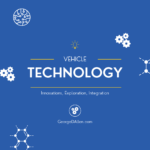Valukas Report: GM’s Vehicle Occupant Sensing (Part 3)

The Valukas Report: A Deep Dive
In the realm of automotive engineering, the safety of vehicle occupants is paramount, and innovations in occupant sensing technologies have been pivotal in achieving this goal. One significant milestone in this arena is the Valukas Report, which sheds light on General Motors’ (GM) strides in vehicle occupant sensing. Let’s embark on a journey through history, explore practical applications, delve into the benefits, and consider potential challenges associated with this cutting-edge technology.
Reference – Valukas Report: https://www.aieg.com/wp-content/uploads/2014/08/Valukas-report-on-gm-redacted2.pdf
A Historical Perspective:
The history of vehicle occupant sensing dates back several decades, with the primary aim of enhancing passenger safety. Early systems were rudimentary, often relying on simple weight sensors or seatbelt engagement indicators. However, the landscape changed
dramatically with the advent of advanced sensor technologies and the integration of sophisticated algorithms.
GM, a pioneer in automotive technology, has been at the forefront of developing and implementing occupant sensing systems. The Valukas Report, named after former U.S. Attorney Anton Valukas, provides a comprehensive overview of GM’s journey in this domain.
It details the company’s commitment to innovation, the evolution of occupant sensing technologies, and the measures taken to enhance safety standards.
Practical Applications:
The practical applications of vehicle occupant sensing extend far beyond the basic notion of detecting a passenger’s presence. Modern systems employ a combination of weight sensors, pressure mats, and advanced algorithms to ascertain the occupant’s position, size, and even emotional state. This wealth of information enables the vehicle’s safety systems to tailor their response, optimizing protection in the event of a collision.
One notable application is the adaptive airbag deployment system. By accurately assessing the occupant’s characteristics, the system can adjust the inflation force and deployment pattern of airbags, minimizing the risk of injury. This level of customization is a game-changer in mitigating the potential harm caused by airbag deployment.
Benefits of Vehicle Occupant Sensing:
The benefits of GM’s vehicle occupant sensing technology are multifaceted. Firstly, it significantly enhances overall passenger safety by providing a more nuanced understanding of the occupants and optimizing safety features accordingly. This not only reduces the likelihood of injury but also ensures that safety measures are not unnecessarily triggered when the seat is unoccupied.
Secondly, the technology contributes to the broader landscape of autonomous driving. As vehicles evolve towards higher levels of autonomy, accurate occupant sensing becomes crucial for creating a safe and secure environment within the vehicle. Occupant awareness can facilitate seamless transitions between manual and autonomous modes, enhancing the overall user experience.
interconnected nature of automotive systems and the pivotal role occupant sensing plays in ensuring the safety of vehicle occupants.
Moving forward, the lessons learned from the Valukas report should catalyze ongoing efforts to advance occupant sensing technologies, foster a culture of open communication within automotive companies, and reinforce the commitment to regulatory compliance. By embracing these principles, the engineering community can contribute to a safer and more secure automotive future for all.
Potential Challenges:
While vehicle occupant sensing brings a host of benefits, it is not without its challenges. Privacy concerns related to the collection and utilization of occupant data are paramount. Striking the right balance between safety and privacy is an ongoing challenge that requires careful consideration and transparent communication with users.
Additionally, the integration of occupant sensing systems across different vehicle models and manufacturers poses a standardization challenge. Achieving a universal standard for occupant sensing is essential to ensure interoperability and consistent safety standards across the automotive industry.
Referencing the Optimization in Systems Engineering: https://georgedallen.com/optimizing-vehicle-occupant-sensing-engineering-breakthroughs-and-innovations/
Real-world Impact:
To illustrate the
real-world impact of GM’s occupant sensing technology, consider a scenario
where emergency services rely on accurate occupant information during rescue
operations. The technology enables rescuers to determine the number and
location of occupants in a vehicle, streamlining rescue efforts and potentially
saving lives.
In the healthcare sector,
occupant sensing can be integrated into medical transport vehicles, ensuring
the well-being of patients during transit. The system can monitor and adapt to
the occupant’s condition, providing a safer and more comfortable journey.
About George D. Allen Consulting:
George D. Allen Consulting is a pioneering force in driving engineering excellence and innovation within the automotive industry. Led by George D. Allen, a seasoned engineering specialist with an illustrious background in occupant safety and systems development, the company is committed to revolutionizing engineering practices for businesses on the cusp of automotive technology. With a proven track record, tailored solutions, and an unwavering commitment to staying ahead of industry trends, George D. Allen Consulting partners with organizations to create a safer, smarter, and more innovative future. For more information, visit www.GeorgeDAllen.com.
Contact:
Website: www.GeorgeDAllen.com
Email: inquiry@GeorgeDAllen.com
Phone: 248-509-4188
Unlock your engineering potential today. Connect with us for a consultation.
Lorem ipsum dolor sit amet, consectetur adipiscing elit. Ut elit tellus, luctus nec ullamcorper mattis, pulvinar dapibus leo.


